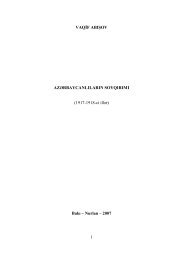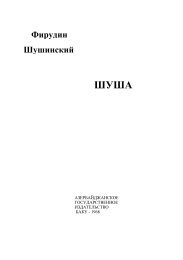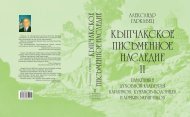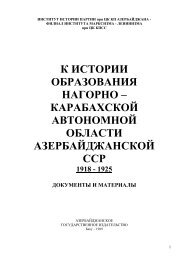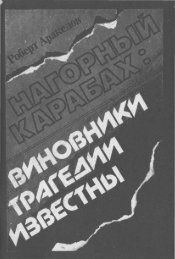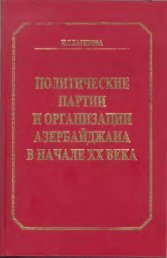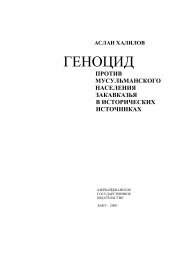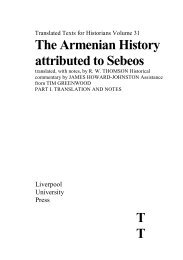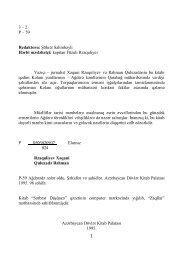ARMENIAN - Erevangala500
ARMENIAN - Erevangala500
ARMENIAN - Erevangala500
You also want an ePaper? Increase the reach of your titles
YUMPU automatically turns print PDFs into web optimized ePapers that Google loves.
An illustration from the book Turkey and the Armenian Atrocities,<br />
published in the United States in 1896. Caption: "Slaughter o f<br />
Armenians in Sasun. This is a true picture o f the slaughter o f<br />
innocent people which was inflicted on the innocent Armenians<br />
by the bloody Kurds and enraged soldiers. The carnage ended<br />
in the massacre o f 50,000 people or more. Hundreds o f thousands<br />
were left without food or shelter after the plundering and<br />
burning".<br />
In many handbooks o f Armenian history, one can read<br />
the names o f the "heroes" who incited the population o f<br />
Sasun to revolt. These names are Mihran Damadian and<br />
Hampartsum Boyadjian. Both had previous experience<br />
in trouble-making, having organized the revolt o f Kum<br />
Kapu (April, 1890). Mihran Damadian had plotted anti-<br />
Turkish demonstrations in Athens after fleeing from<br />
Constantinople. Boyadjian had come to Sasun from the<br />
Caucasus, disguised as a sheik and carrying lots o f<br />
money. Purchasing arms was thus no problem for him.<br />
Just how "unarmed" the rebels were becomes clear when<br />
we learn that the Kurds needed twelve days o f ferocious<br />
battle to capture a single position from the Armenians.<br />
The Times o f November 17, 1894 published an article<br />
from the pen o f a certain G. Hagopian, writing from Fulham,<br />
concerning the events o f Sasun. Even Christopher<br />
Walker, in his work Armenia - The Survival of a Nation,<br />
speaks o f "rather imprecise details" when referring to<br />
this letter. But what did that matter? The world press<br />
seized upon Hagopian's account and the entire world was<br />
outraged by the suppression o f revolts which in fact were<br />
already taking on the characteristics o f civil war. They<br />
were supposed to be "unarmed" revolts. It was also at<br />
this time that the world public became accustomed to the<br />
totally meaningless casualty figures appearing in cap<br />
66<br />
tions (e. g., "50,000 dead or more"). The readers accepted<br />
these absurd figures just as uncritically as modem<br />
readers accept the accounts o f two and a half million<br />
Armenian dead in World War I. To ask about the Islamic<br />
victims was already uninteresting at the time o f the publication<br />
of Turkey and the Armenian Atrocities.<br />
Gang leader Kavafian, one o f the troublemakers at Sasun. He is<br />
seen here as a Russian officer, which he had been all along -<br />
even when he was making trouble in Sasun.<br />
The Armenian revolts in the latter part o f the nineteenth century<br />
and in the years leading up to the First World War often made<br />
international headlines. The ringleaders and agitators behind these<br />
revolts were o f course professional revolutionaries. When the<br />
First World War broke out, they promptly turned up again as the<br />
commanders o f Armenian volunteer units or terrorist groups.<br />
They still had the same goal in mind: the destruction o f the Turks.



